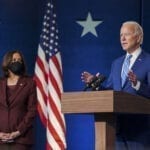As the Obama administration takes office, energy resource allocation is both the most critical national security issue and the most critical economic issue facing us. It will be difficult to sustain and improve economic growth unless we implement policies that result in the more rational use of energy resources, especially those for which there is a finite supply.
How Is the Obama Administration Likely to Face the Challenge?
On the demand side, President-elect Barack Obama’s energy plan when he was a candidate contemplated a 15% reduction in electricity demand by 2020 by requiring utilities to meet mandatory demand reduction targets and by seeking to decouple the utility sector’s profit from increased energy usage. The plan promoted energy conservation by reimbursing electricity distribution companies for a quarter of their expenditures on smart grid investments. Furthermore, to reduce national oil consumption, Obama’s plan called for one million high-mileage, plug-in hybrid electric vehicles to be on the road by 2015.
On the supply side, candidate Obama’s plan focused on renewable energy sources and carbon dioxide emissions reduction. The plan included a national renewable portfolio standard requiring that 10% of electricity production come from renewable energy sources (such as wind, solar, and biomass) by 2012, increasing to 25% by 2025. It also contemplated a national carbon cap-and-trade program to reduce emissions to 1990 levels by 2020, and by 80% by 2050.
While candidate Obama’s energy plan acknowledged nuclear power as a carbon-free source of electric power, it also recognized that key issues, including the security of nuclear fuel, spent fuel storage, and proliferation risk, needed to be addressed. The plan also called for the U.S. Department of Energy (DOE) to start a public-private partnership to build five commercial-scale, coal-fired plants that capture and sequester carbon dioxide emissions.
Prior to the inauguration, it is unclear which of these goals President-elect Obama’s energy team — including DOE secretary nominee Steven Chu, 1997 co-recipient of the Nobel Prize in physics; Lisa Jackson, nominated to head the Environmental Protection Agency; and Carol Browner, nominated as assistant to the president for energy and climate change — will focus on. But given the characterization of Browner’s post as the Obama administration’s "climate czar" and statements by Chu regarding coal being his "worst nightmare," it would not be surprising to see a strong early push for carbon cap-and-trade legislation.
But by unduly emphasizing in troubled economic times a carbon cap-and trade program, which Chu admits could result in a 25% increase in electricity costs, the Obama administration risks focusing energy policy on consumer penalties rather than market incentives. Although there is bipartisan congressional support for such a program, a detailed debate on anticipated cost impacts has yet to occur. When it does, that support could quickly evaporate.
As an alternative, a national energy policy that allocates fossil fuel and renewable energy resources in a manner that ensures our national security and fosters "green" economic development (where "green" is the color of money) might find more support among the investors, taxpayers, and consumers who fund private capital and public subsidies to support that policy.
What Does This Mean Specifically?
First, promote and reward energy conservation and efficiency as a national security issue; every barrel of oil we use now is one less that will be available when we need it for strategic purposes. How? Structure power markets and incent suppliers, through accelerated depreciation or otherwise, to invest in smart grids and to permit consumer price transparency. Adopt national policies, similar to those contemplated by certain states, that incent and permit suppliers to grow even if demand falls. Fund research and development (R&D) on more efficient hybrid vehicle technology, appliances, and building materials, and then reward their use.
Second, promote the gradual and rational transition from ultimately finite fossil fuels to nuclear and renewable energy sources as an economic development issue. How? A federal renewable portfolio standard is a good start, provided that it takes into account regional differences in available resources. Stable, long-term production and investment tax incentives for nuclear and renewable power developers, similar to those enjoyed by fossil fuel power producers, are critical. It is important to fund R&D on spent nuclear fuel recycling and storage in order to mitigate security concerns. It also is crucial to recognize that our fossil fuel supplies are a significant strategic asset and that we should use them accordingly, including the development of clean coal alternatives.
Candidate Obama’s energy plan contemplated most of these proposals. At issue is not the what, but the how. President-elect Obama can define the nation’s energy future by effecting policies that promote energy conservation and efficiency as well as the transition from finite fossil fuels to nuclear and other alternative sources. By framing those policies as national security and economic development incentives that resonate with and reward stakeholders, the Obama administration will better position itself to successfully carry them out.
A happy consequence of that success would be progress in achieving the desired reduction in carbon dioxide emissions, without penalizing stakeholders.
— Ronald Fisher (fisher@blankrome.com) is a corporate transactional attorney with Blank Rome LLP and chairs that law firm’s energy industry team. He and his colleagues represent public utilities, their unregulated affiliates, independent power project developers and owners, and the investors who fund them. The views expressed do not necessarily represent those of Blank Rome LLP, its partners, or clients.








